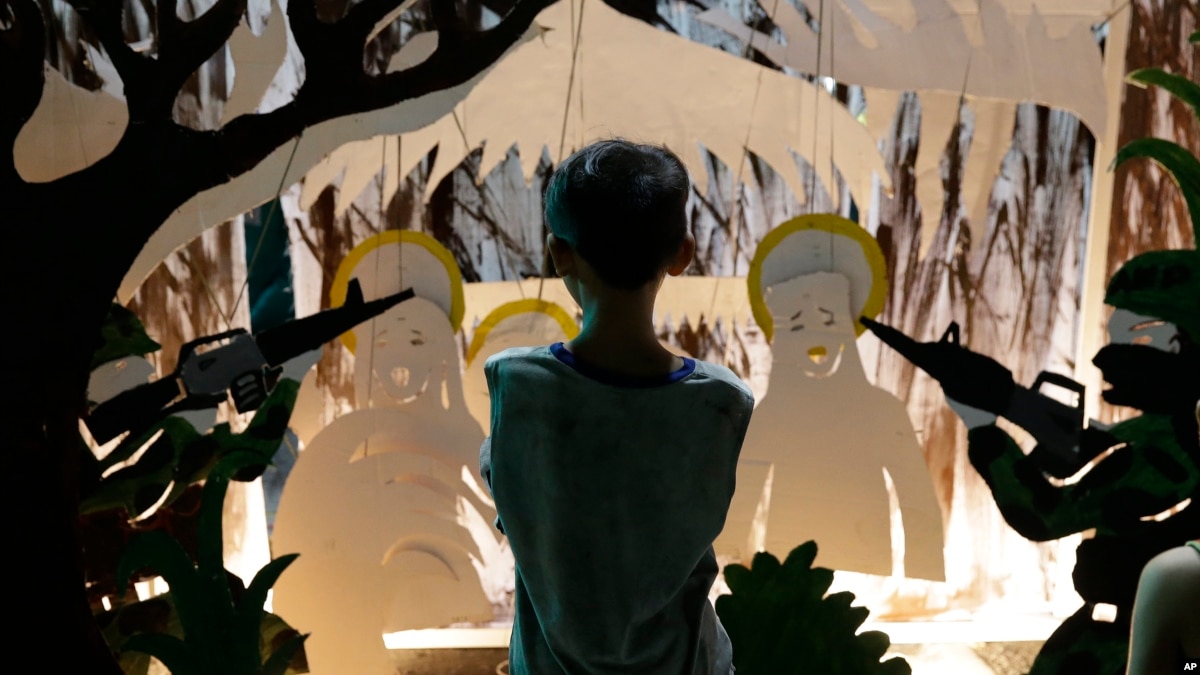
Martial law seldom excites people who live under it. Ukrainians were nervous when an order took effect last month, against a growing threat from Russia, to let the military mobilize citizens, ban mass gatherings and take private property. In Thailand, a youth group protested in September against localized martial law requiring that all vehicles and firearms be registered, the follow-up to an ambush against law enforcement.
But as the southern Philippine island of Mindanao looks likely to enter a second full year of martial law in January, many there feel thankful.
Authorities on Mindanao have enforced curfews and road checkpoints since May 2017 to squelch decades of violence by Muslim rebels. They’ve done most of it without disrupting common people’s daily lives. Now, many on the island of 21 million people welcome a 2019 extension as a way to keep peace long term.
“As far as Mindanao is concerned, there doesn’t seem to be much of a reaction to that. People prefer it, as a matter of fact,” said Rhona Canoy, president of an international school and part of a political family in the Mindanao city Cagayan de Oro.
Philippine President Rodrigo Duterte last week asked Congress to extend martial law through 2019 at the request of the armed forces. The military said the extension would help curb terrorism and reported high levels of public support.
“We have received overwhelming positive feedback, not only on our efficient implementation of martial law, but also its impact to security, local economy, and governance and well-being of local communities,” the Armed Forces of the Philippines said in a statement last month.
A fixture since the battle of 2017
Martial law this year stopped any large-scale resurgence of Muslim rebels after a they were routed in a civil war in 2017. The authorities had legal freedom to track rebel movements via interrogation and stop them from entering the cities.
The government first ordered martial law in May 2017 to help troops and police beat the Islamic State-inspired Maute Group for control of Marawi. Fighting in that Mindanao city lasted five months and killed about 1,100 people.
Outside Marawi, much of Mindanao has seen little change under martial law aside from quick, pro forma vehicular stops or curfew orders.
Rebels there believe the Philippine Catholic majority has taken an unfair share of resources despite five centuries of Muslim settlement. Rebel-linked violence has killed about 120,000 people in Mindanao and adjacent Sulu Sea since the 1960s.
Sporadic violence
Troops believe Islamic State was behind the Marawi insurgency and worry the international terrorist group still has people on the island. This year has been marked by sporadic terrorist acts.
In the industrial port city Cagayan de Oro, random security checks have become more common this year amid fears of religiously-motivated attacks, Canoy said. “There’s recent violence going on, pockets of it,” she said.
In June, a suspected member of the Maute Group was arrested in Cagayan de Oro, domestic media reported. The following month a suicide bomber, possibly from abroad, killed 11 people in Mindanao by blowing up a van.
“We have to think what would happen if the army wasn’t there and they didn’t have the legitimacy (and) tools to implement the type of surveillance, that’s the real question to ask,” said Enrico Cau, associate researcher at the Taiwan Center for International Strategic Studies. “The people of Marawi and all the communities, they need stability so in order to have stability, you need control.”
Opponents outside Mindanao
When martial law first took effect in 2017, citizens worried it would bring back the harsher measures taken by authoritarian former president Ferdinand Marcos in 1972 to stop plots against his government.
Opponents outside Mindanao still fear Duterte wants to extend martial law across the Philippines, a democratic archipelago of 102 million people, to control the illegal drug trade and advance his economic agenda.
Duterte’s government is “using martial law as its vehicle to suppress opposition to big mining, plantation, energy and other projects which have significant U.S. and other foreign investments,” the advocacy group Bayan Mindanao said in a statement December 6.
Today's opposition comes largely from leftist groups, said Herman Kraft, political science professor at the University of the Philippines Diliman.
“If you’re talking about actual evidence of human rights violations being perpetrated, I think there’s less of those that can actually be pointed to,” he said. “I’m not saying that they have completely disappeared, but there’s less of it that’s been going on over the past few years.”
Read More Why One Philippine Island Can’t Get Enough of Martial Law : https://ift.tt/2L9gkf4
No comments:
Post a Comment